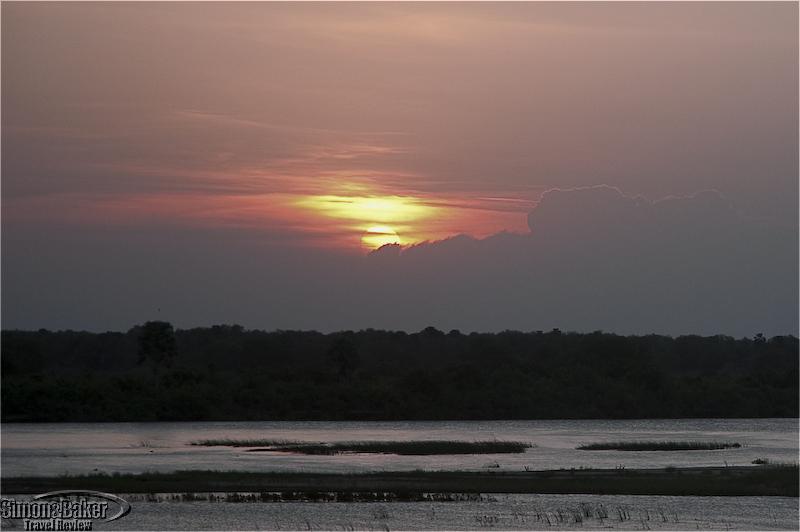
by Editor | Jan 1, 2011 | Africa, Selous, Simon and Baker Travel Review, Tanzania
Stretched along a bluff overlooking the Rufiji River at the especially scenic eastern tip of the famed Selous Game Reserve in southeast Tanzania, the Rufiji River Camp delivered an outstanding variety of game viewing opportunities. First identified as a protected area over a century ago, Selous expanded over time to become the largest faunal reserve in Africa. In 1982, it was designated a World Heritage Site by the United Nations Educational, Scientific and Cultural Organization (UNESCO) for its wildlife concentration and diversity and its undisturbed environment. The profusion of wildlife was obvious even as I made my way from the airstrip, turning the relatively short distance to the camp into an extended game drive.
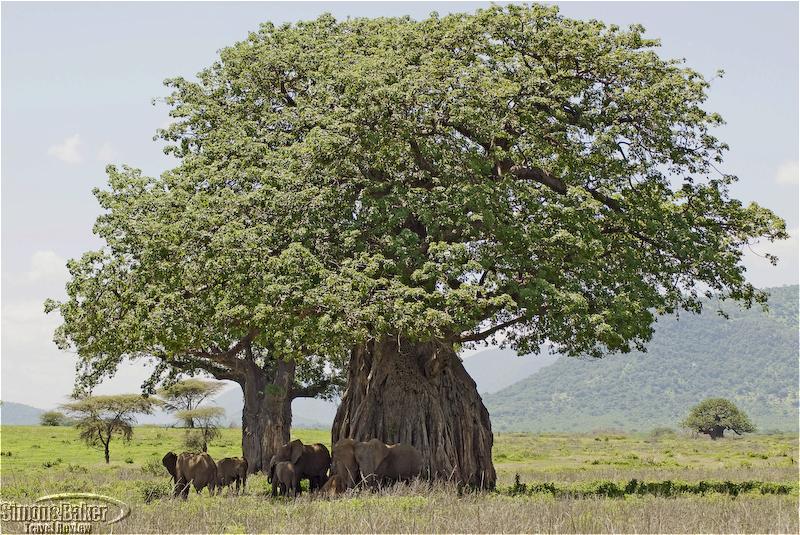
by Editor | Jan 1, 2011 | Africa, Ruaha, Simon and Baker Travel Review, Tanzania
Strung along the rocky bank of the river that gave it its name, Ruaha River Lodge was one of only a handful of permanent accommodations within the rugged immensity of the Ruaha National Park, in the highlands of central Tanzania. The 3,980 square mile (10,300 square kilometer) park is the second largest in the country after the Serengeti. It is reputed for its craggy scenery as well as the abundance and variety of the species that can be found there. Yet visitors are relatively few so that the park retains a great wilderness atmosphere.
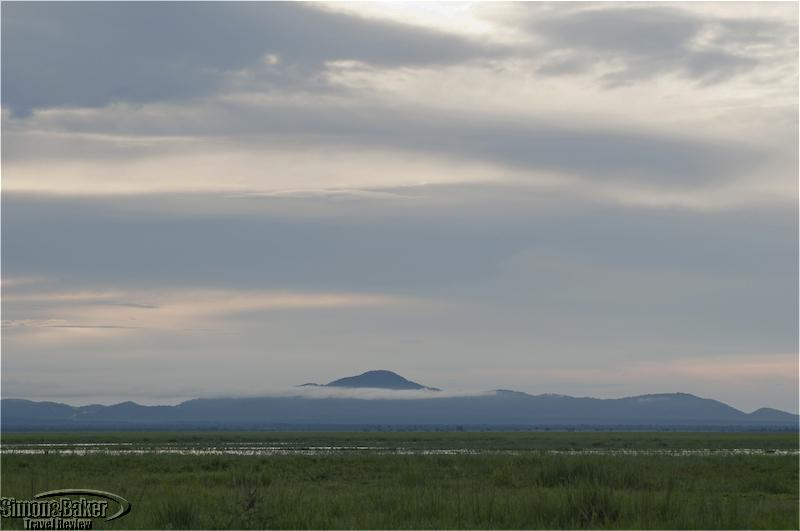
by Editor | Jan 1, 2011 | Africa, Rukwa, Simon and Baker Travel Review, Tanzania
Katavi Wilderness Camp delivered the ultimate safari experience, a pristine African environment unchanged for millennia, teeming with game and mine alone. The camp was an intimate enclave of comfort and gracious hospitality deep within the Katavi National Park, in the far western reaches of Tanzania. It took determination to reach Katavi, its main link to the 21st century being a twice-weekly light airplane connection with the Ruaha National Park. Road travel, for the daring souls who might consider it, was assessed in days. Which explains why despite its reputation for pristine wilderness and exceptional game viewing the 1,7270 square mile (4,471 square kilometer) park, the third largest in the country, only receives a few hundred visitors per year. The privilege of being one of them was obvious to me by the time I reached the camp.
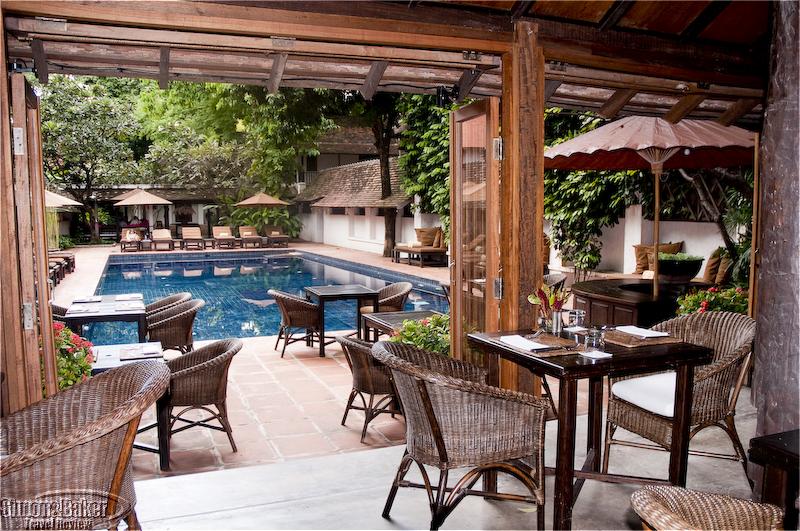
by Editor | Oct 1, 2010 | Simon and Baker Travel Review, Thailand
Named after the 200-year-old tamarind tree that dominates the property, Tamarind Village was a haven of rustic tranquility in the heart of the lively historic center of Chiang Mai. Designed by award-winning architect Ong-Ard Satrabhandhu, it translated distinctive northern Thai architectural elements into an inviting contemporary version of a traditional village. A pathway shaded with arching bamboo led to the front entrance of the verdant walled compound with its public areas and private guest quarters laid-out around a series of serene internal courtyards filled with flowering trees.
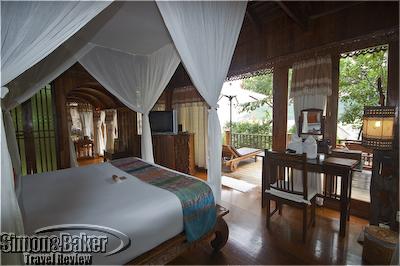
by Editor | Oct 1, 2010 | Simon and Baker Travel Review, Thailand
Santhiya Resort and Spa was an exceptional property that placed in a contemporary context the mystique of the exotic kingdom of Siam. Its secluded location at the northern tip of the remote island of Koh Phangan in the Gulf of Thailand, coupled with its ethos of conservation of its cultural heritage as well as the natural environment made for an experience that was a highlight of my recent visit to Thailand.
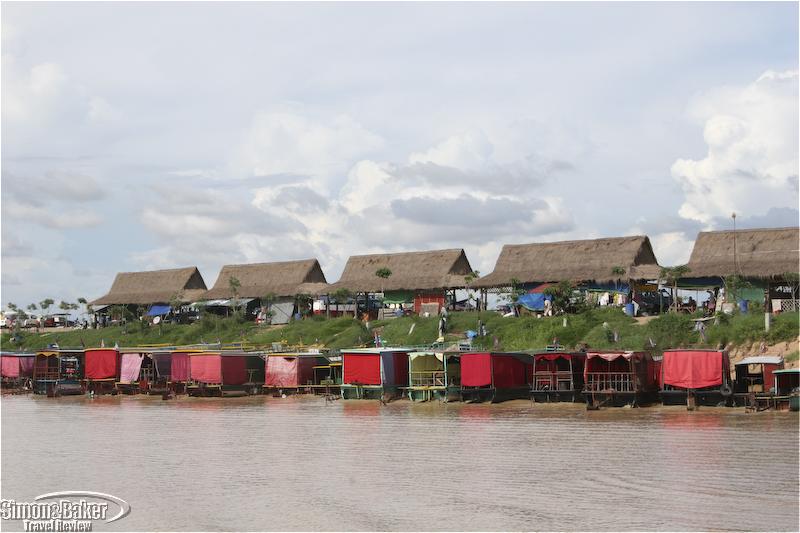
by Editor | Sep 1, 2010 | Cambodia, Simon and Baker Travel Review
After exploring the central area of Siem Reap and enjoying visits to several of the world famous Angkor Temples that draw millions of visitors to Cambodia every year, I was eager to see a little of the country off the beaten path. When I heard that there was a conservation area within easy reach of Siem Reap (90 minutes) I jumped at the opportunity even though it was birding low season. I went on a Sam Veasna Center for Wildlife Conservation Bird Reserve and Floating Village Day Trip.
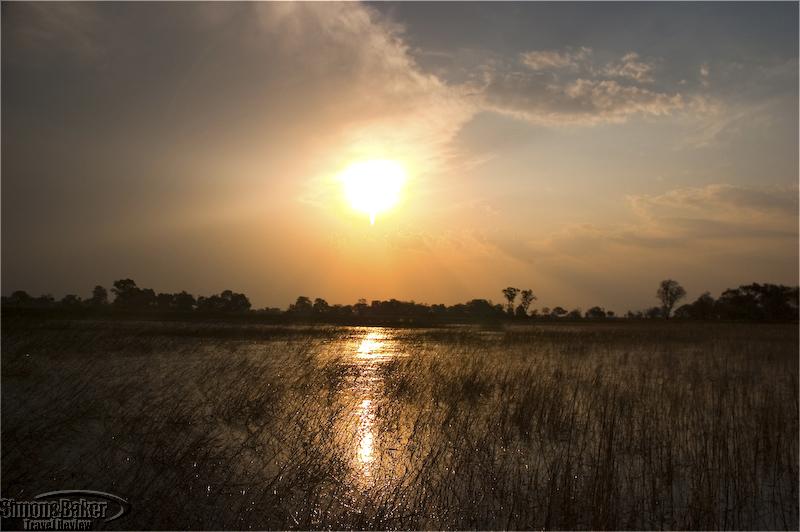
by Editor | Nov 1, 2009 | Africa, Botswana, Okavango Delta, Simon and Baker Travel Review
My visit to Xaranna began with a quintessential Delta experience, an exhilarating boat ride through a watery labyrinth of papyrus-bordered channels and floating islands of water lily pads. Secluded in the pristine wilderness of a 62,000 acre (25,000 hectare) wildlife concession in the southern Okavango, Xaranna can only be reached by boat most of the year. Birds soared as we went by and tiny painted frogs clung to their reeds; bulbous eyes emerged at water level, attached to a large bull hippo unflinchingly claiming right of way. We detoured. Across the lagoon, pale pavilions materialized among the trees. We landed to the warmest of welcomes from the management and staff.
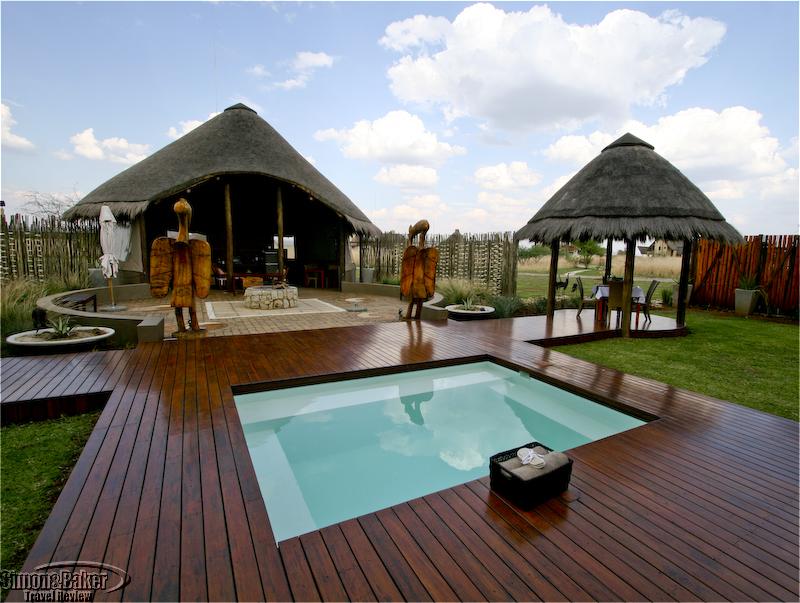
by Editor | Nov 1, 2009 | Africa, Simon and Baker Travel Review, South Africa, Waterberg
We arrived at Botsebotse in the Zebula Game and Country Reserve following several weeks of travel to relax a bit and decompress. We were delighted to discover the property was for adults only (except when a single family booked exclusively). On our first morning there, eager to stretch our legs a bit after days of bush drives we set off on a stroll before breakfast that turned out to be quite a treat. Although our entire stay at the property was a pleasure that early morning walk is what I remember most fondly from our two-night visit.
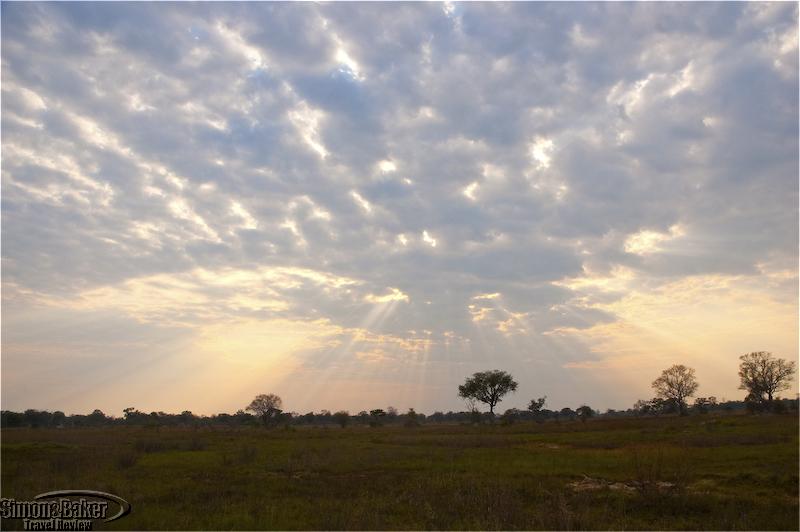
by Editor | Oct 1, 2009 | Africa, Botswana, Okavango Delta, Simon and Baker Travel Review
When traveling to remote locations it is a rare experience for me to reach a place where everything is unerringly right. Xudum Okavango Delta Lodge was such a place. Built deep within a 62,000 acre (25,000 hectare) wildlife concession, Xudum appeared like a remote Eden when I first approached it from the water. The peaks of its impeccably thatched roofs peered among the treetops of a lush riverine forest at the edge of a lagoon carpeted with water lilies in full bloom. The tri-leveled main lodge was designed to showcase the endless vistas of reed and papyrus beds of the southern Delta, made all the more striking by the witty blend of sophisticated luxury and whimsy of the stylish contemporary décor. Sectional sofas mingled with local craft and, introducing the property’s recycling theme, tire swings and sculptural end tables that turned out to be made of soda cans. I immediately coveted the Xudum kitchen with its battery of professional cooktops and ovens, its tall wine refrigerator and the latest in kitchen appliances. It even had a gleaming Italian espresso machine and a long granite serving bar with a sweeping view of the Delta!
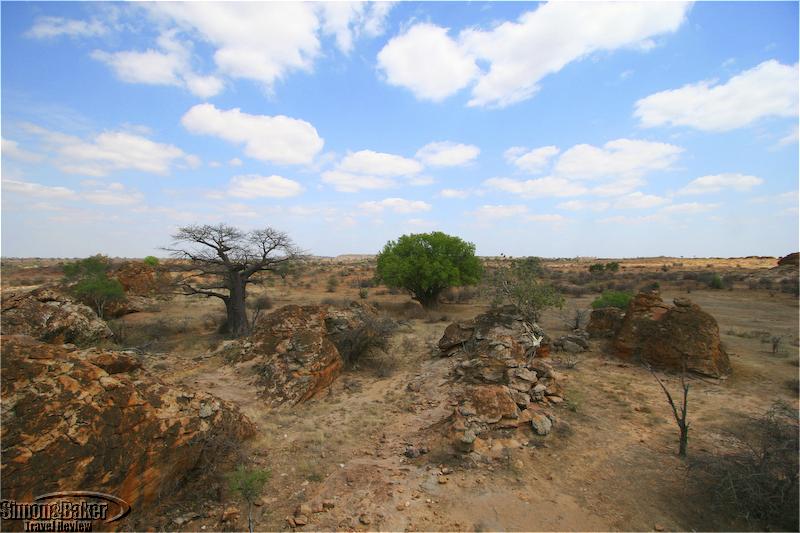
by Editor | Oct 1, 2009 | Africa, Botswana, Simon and Baker Travel Review, Tuli Block
We reached the Tuli Safari Lodge Reserve, missing the border closing at Pont Drift by a hair (our transfer service was two hours late picking us up), after a five hour drive from Johannesburg, South Africa. A representative of the lodge (later we discovered he was to be our constant companion and fearless guide for the next five nights) met us at the border and escorted us through. Within minutes we were seated in an open Land Rover crossing the dry river bed of the Limpopo River, one of the most important rivers in Southern Africa, beginning our five night Tuli Adventure Trail. During our stay we spent time at Nokalodi Tented Camp, Tuli Safari Hide and Tuli Safari Lodge all of which were property of the Tuli Safari Lodge.
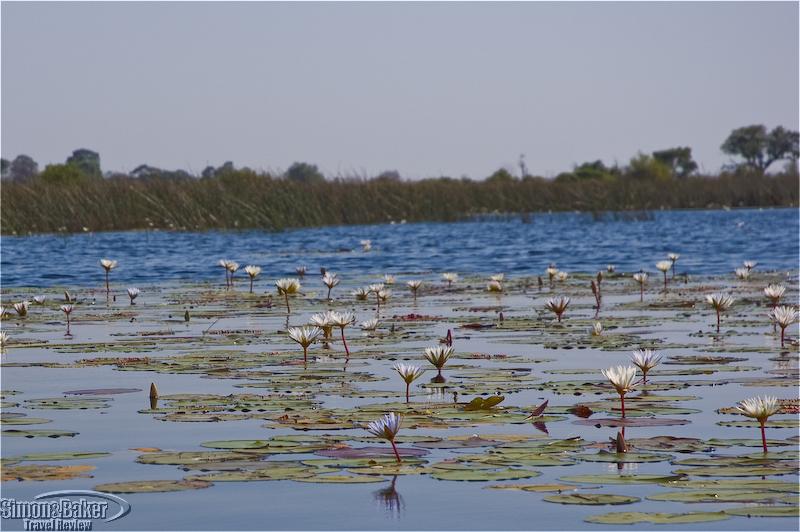
by Editor | Oct 1, 2009 | Africa, Botswana, Simon and Baker Travel Review
Stretched along a verdant bank of the Thamalakane River on the outskirts of Maun, the gateway city to the Okavango Delta, Thamalakane River Lodge was quite literally a breath of fresh air after my extended stay in the parched wilderness of the Kalahari. Built in a grove of tall riverine trees filled with abundant bird life, the lodge was resolutely turned toward the river. All guest chalets and common areas had terraces that took full advantage of the cooling breezes and serene 180 degree view of the riverbanks lined with fluttering reeds visited by an ever changing array of water fowl and birds. Dusk was spectacular, with the sun setting the river ablaze as it slowly dipped behind trees.
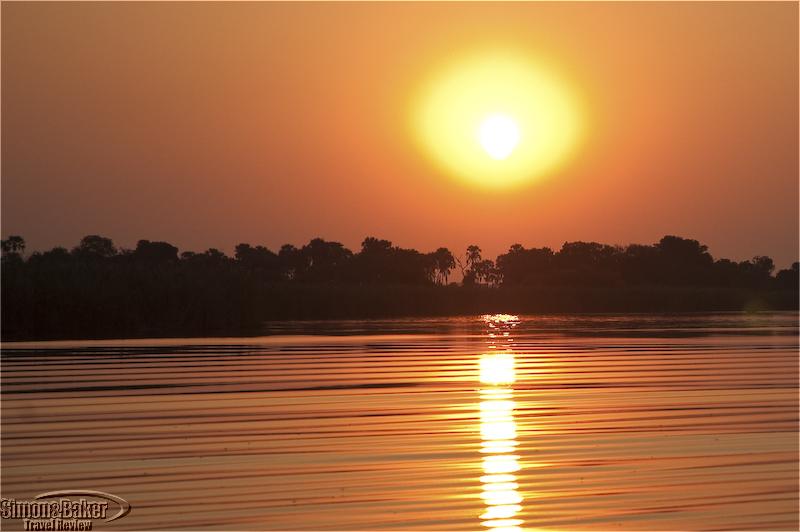
by Editor | Oct 1, 2009 | Africa, Botswana, Okavango Delta, Simon and Baker Travel Review
This was my first experience in the Okavango Delta. I couldn’t have wished for a better introduction to this unique landscape of papyrus-lined channels and water lily-filled lagoons weaving through shady glades and rich savannah grasslands than Nxabega Okavango Tented Camp. Set under a lush canopy of massive ebony trees in a remote 19,800 acre (8,000 hectare) concession, Nxabega (“place of the giraffe” in Basarwa, the language of the river bushmen) was an oasis of elegance and comfort in the heart of the Delta. From the instant the Cessna touched down, it was obvious that a fascinating adventure had begun. Exceptional rains had recently flooded the camp’s own airstrip; we had landed on a nearby, higher ground landing strip, my guide informed me in the course of his warm welcome. We would now drive a few miles to Nxabega; and by the way, a leopard guarding his freshly killed impala had been sighted earlier this morning near our route; would I care to make a short detour to look for it?
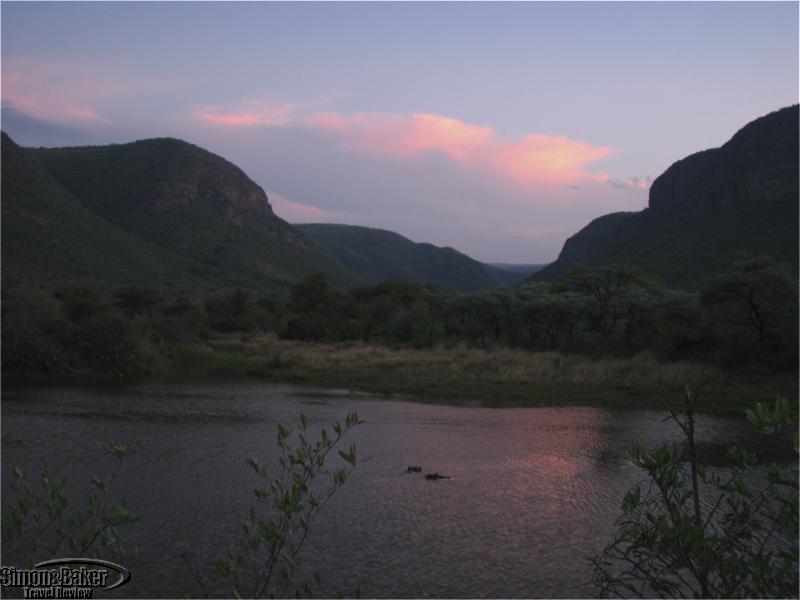
by Editor | Oct 1, 2009 | Africa, Simon and Baker Travel Review, South Africa, Waterberg
One of of the features we liked the most about Marataba, meaning place near the mountains in Tsonga, was the splendid view of the Waterberg Mountains. We enjoyed this view from the comfort of our tented room, the common areas and the game drives. Located in a private concession within the Marakele National Park, Marataba was a luxury and gourmet oriented game viewing property managed jointly by South African Parks and Hunter Hotels.
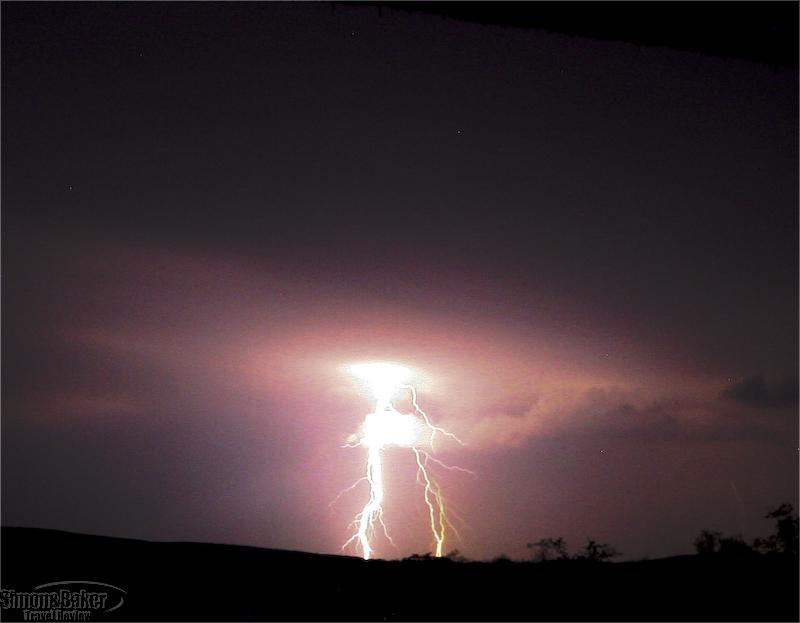
by Editor | Oct 1, 2009 | Africa, Simon and Baker Travel Review, South Africa, Waterberg
A short drive from Johannesburg led us to shady parking in front of Jembisa Lodge where Ané Van Schalkwyk and Steven and Jane Leonard, the executive staff of the property, greeted us warmly late one afternoon. From the parking area we crossed a courtyard to reach the entrance to the north facing house. After a day in the city and a flat tire on the way we were eager to get back to the bush. While Ané showed us around the house and gardens, we discussed our activities preferences with Steven, our guide; then they left to prepare for our evening outing and we sat down to a well anticipated late lunch.
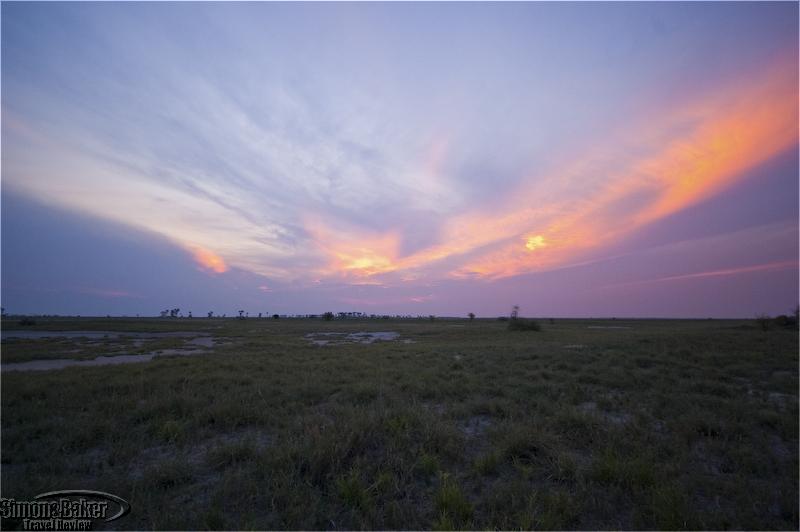
by Editor | Oct 1, 2009 | Africa, Botswana, Makgadikgadi, Simon and Baker Travel Review
The single propeller plane had been droning for almost one hour over some of the flattest, emptiest land I had ever seen. Swirls of gleaming salt pans and dusty sand banks stretched to infinity, baked by a merciless sun. The pilot nodded to the right. “Jack’s Camp,” he informed me, dipping the wing to give me a better look. Beneath me a palm and acacia-studded oasis was emerging from the stark Kalahari wilderness. Large green safari tents were scattered among high savannah grass, hinting of creature comforts. Could this be a mirage?
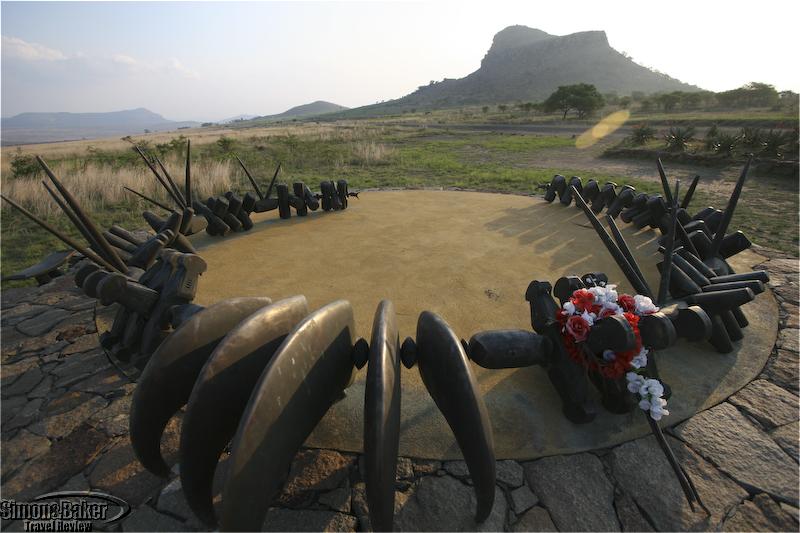
by Editor | Oct 1, 2009 | Africa, Kwazulu Natal, Simon and Baker Travel Review, South Africa
We arrived at Isandlwana, named for nearby Mount Isandlwana, after a morning drive through the green and rocky hills of KwaZulu Natal, an area of South Africa known for its natural beauty and battle scars. The first thing that struck me on arrival at the lodge was the discreet way it was constructed on the side of a hill. Not surprisingly one of our favorite features at this small lodge was the view of the neighboring Zulu village and surrounding countryside from the common areas and our rooms.
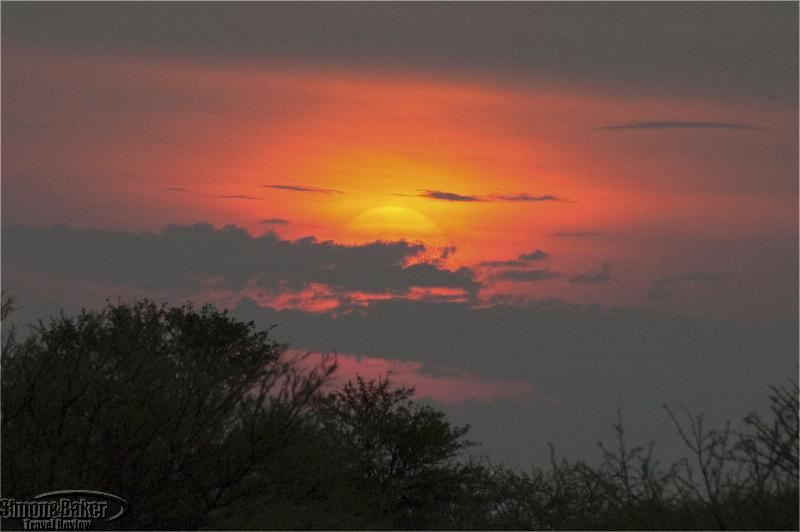
by Editor | Oct 1, 2009 | Africa, Botswana, Kalahari, Simon and Baker Travel Review
Haina Kalahari Lodge gave me an immediate sense of home, a delightful but puzzling first impression from a place tucked in a remote conservancy at the northern edge of the Central Kalahari Game Reserve (a 20,386 square mile, 52,800 square kilometer, semi-arid immensity roughly the size of Switzerland; and the second largest game reserve in the world after Tanzania’s Selous). The reason became obvious once I found out that this oasis of laid-back luxury in the heart of some of the harshest wilderness in Southern Africa was originally intended, and functioned for a decade, as a private multi-family holiday retreat before it began to welcome guests in 2007.
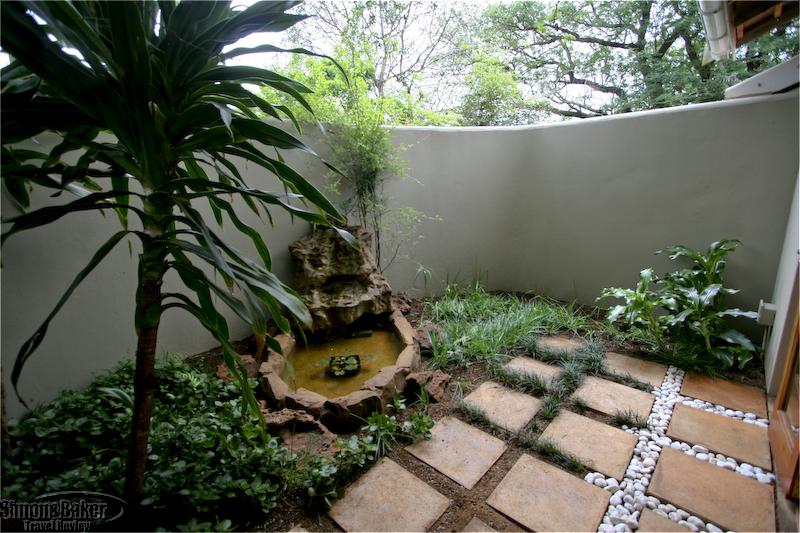
by Editor | Oct 1, 2009 | Africa, Kwazulu Natal, Simon and Baker Travel Review, South Africa
Our stay at the mysteriously named Ghost Mountain Inn was sorrowfully affected by the weather. It rained more or less constantly during our entire two-night stay. That didn’t seem to dampen the staff’s spirits much. Thanks to their cheerful and can-do attitude we went forward with sightseeing plans and had a pleasant stay.
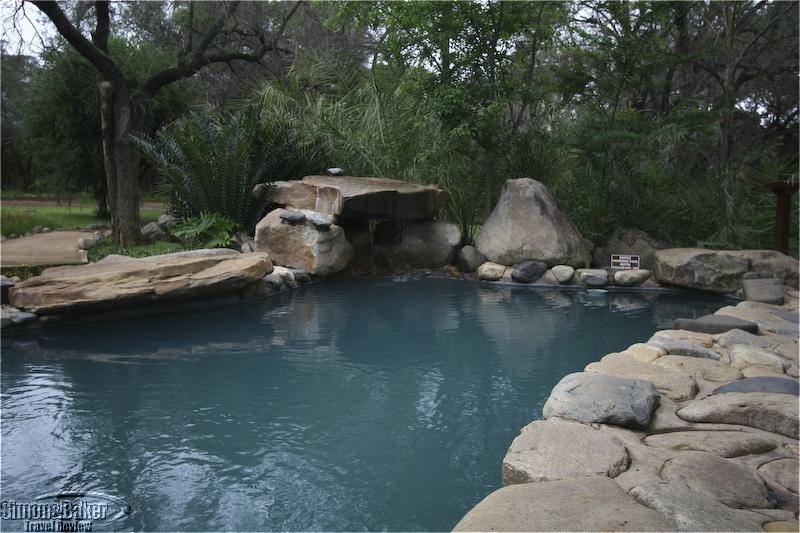
by Editor | Oct 1, 2009 | Africa, Kwazulu Natal, Simon and Baker Travel Review, South Africa
While we were at Amakhosi it rained every day, on every drive. One day we returned so soaked, in spite of the rain ponchos and blankets provided in the safari vehicle, my boots took three days to dry out. And, yet the game viewing rewards were such that all the guests, children included, went out drive after drive in the cold and rain.
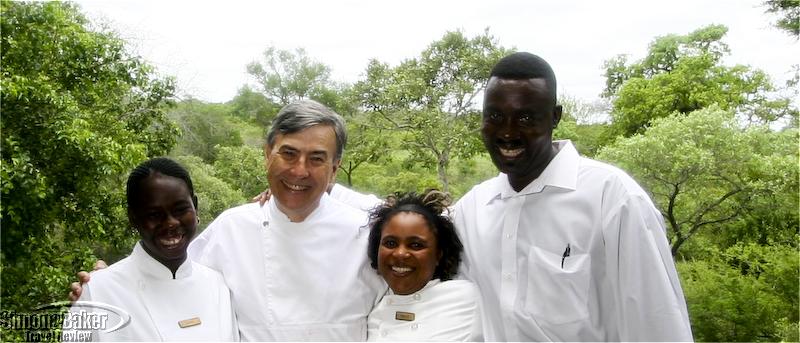
by Editor | Nov 1, 2008 | Africa, Kruger, Simon and Baker Travel Review, South Africa
This attractive luxury bush property favored by the rich and famous was lovingly maintained and well run. It was named Malewane for the ravine on which the property was built. We arrived a little wilted following a day of travel from Cape Town via Johannesburg. John Jackson, the property general manager and our gracious host, immediately showed us to our quarters, the Royal Malewane Suite, on one end of the property that would be our home for the following three nights. There we were greeted by a sea of welcoming smiles from the small group of staff members who would take turns looking after us during our stay.
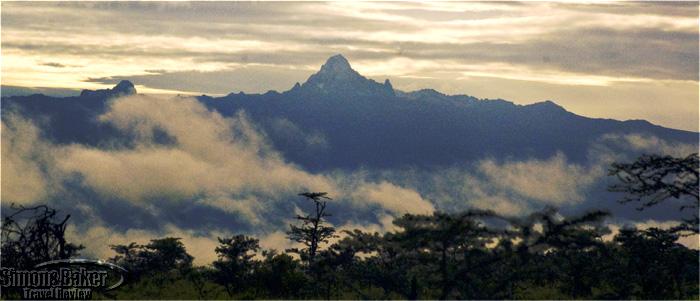
by Editor | Nov 1, 2008 | Africa, Kenya, Laikipia, Simon and Baker Travel Review
Porini Rhino Camp was located within the 90,000 acre (365 square kilometer) Ol Pejeta Conservancy, on a verdant plateau between the foothills of the Aberdares Range and the stately snow-capped peak of Mount Kenya. Although the area was on the equator, the altitude (around 6,500 feet or 2,000 meters) made for a temperate climate with cool nights, and a landscape of wooded grassland reminiscent of alpine pastures. However, there was nothing alpine about the fauna; game viewing was some of the best East Africa had to offer both in density and variety. Within minutes of entering the conservancy, I had sighted a white rhino, followed in short order by a large journey of reticulated giraffes.
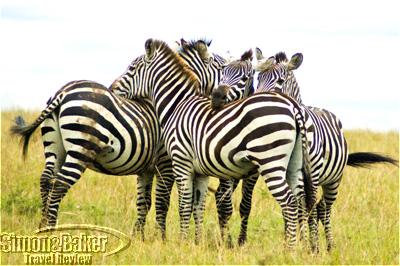
by Editor | Nov 1, 2008 | Africa, Kenya, Simon and Baker Travel Review
Porini is Swahili for “in the wilds.” Nowhere did I find a more vivid proof of it than at the Mara Porini Camp. The intimate luxury camp was nestled in a soaring grove of yellow-barked acacia, within the Ol Kinyei Conservancy, a private 8,500 acre (3,500 hectare) swath of the Serengeti-Masai Mara ecosystem set aside by the local Masai land-owners for the exclusive use of Mara Porini guests. This pristine wilderness of open savannah plains and rolling hills, riverine forest, permanent streams and spectacular views across the Masai Mara was home for the broad variety of species for which the park is famous, including resident big cats.
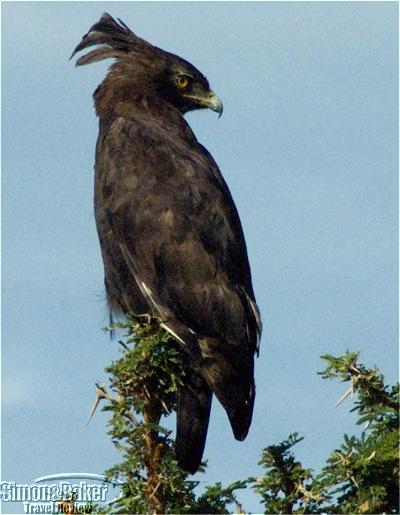
by Editor | Nov 1, 2008 | Africa, Kenya, Masai Mara, Simon and Baker Travel Review
Porini Lion Camp far exceeded any promise its name may have implied! Lions? I had little doubt there’d be lions. The camp was located in the Olare Orok Conservancy, a 23,000 acre (9,000 hectare) private game reserve on the northwest boundary of the Masai Mara National Reserve, which is reputed for its lions. But even at my most optimistic, I hadn’t expected an entire pride of lions, 17 in all, to materialize in the savannah grass 10 minutes into my first game drive! They were rousing from their afternoon siesta, feigning nonchalance as they began to focus on an approaching herd of zebras. I was able to observe the team effort of their stalking process and the zebra’s ultimate narrow escape. We moved on, only to stop again instants later at the edge of a clearing were a breeding herd of elephants was feeding. I was privileged to observe a newborn elephant calf’s first unsteady steps, and its efforts to figure what to do with its unwieldy nasal appendage in its awkward attempt to suckle. A few feet away, its sturdier week-old cousin was trying to uproot a twig, before loosing interest and taking off, puppy-like, in hot pursuit of a bird. By sundown, without leaving the conservancy, we had also sighted buffalos and a leopard for four of the Big Five! We viewed the “fifth’” at close range early the next morning. Shortly after we crossed the boundary of the Masai Mara National Reserve we happened onto a pair of black rhinos engaged in their courtship ritual. But even this exciting sighting was soon overshadowed by a cheetah and her three young cubs enthusiastically tucking into their impala breakfast.
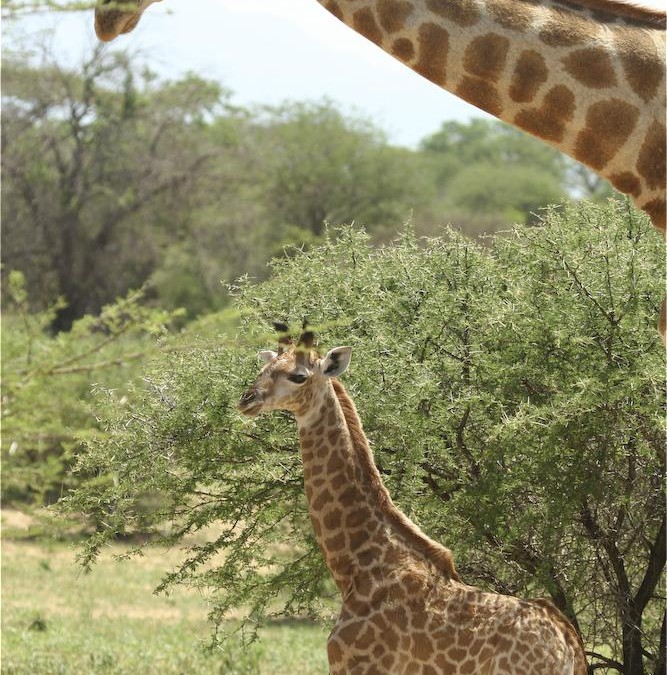
by Editor | Nov 1, 2008 | Africa, Kruger, Simon and Baker Travel Review, South Africa
This little camp, part of the Relais and Chateaux group, will stand out in my memory for bringing us close up and personal with an elephant herd like no other we had encountered before. It was named for Jabulani, the youngest of the adult elephants, who was rescued from certain and slow death when he was three months old. Humans took pity on him after he got stuck in the mud. His elephant family couldn’t get him out and abandoned him. Jabulani’s journey to survival and young adulthood was arduous for him and his saviors; and eventually led to the establishment of Camp Jabulani and the further rescue of a group of adult elephants from Zimbabwe.
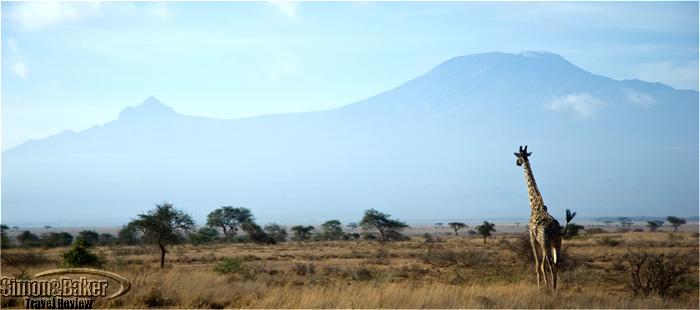
by Editor | Nov 1, 2008 | Africa, Amboseli, Kenya, Simon and Baker Travel Review
A secluded tented camp under the giant umbrella of a thorn acacia tree; elephants wandering across a grassy plain against the majestic backdrop of the snow-capped Mount Kilimanjaro; proud Masai nomads herding their cattle in the distance? My Amboseli Porini safari epitomized the timeless romance of the Kenya! The breathtaking outline of Kilimanjaro filled the horizon as we entered the Selenkay Conservation Area, a 15,000 acre (60 square kilometer) private game reserve where the camp was located, at the northern edge of Amboseli National Park. A cheetah flashed across the track just ahead of us. Further on, a pair of elephant cows and their calves showed us less concern. We waited until they cared to let us go by. Giraffes peered over the treetops. Potbellied warthog piglets scampered behind their mother. By the time we reached the camp, I had already enjoyed a rich impromptu game drive. There, I was warmly welcomed by the camp manager, Tony Musembi and members of the Masai staff, and shown to my tent: a large, comfortably furnished sleeping room and bathroom. I was pleased to notice the environmentally-friendly features of my accommodation: solar electricity, bush shower and the absence of any permanent foundations or fixtures. After enjoying a late al fresco lunch in the shade of an acacia and ample time to settle in, I was escorted to the nearby Masai village for a visit.
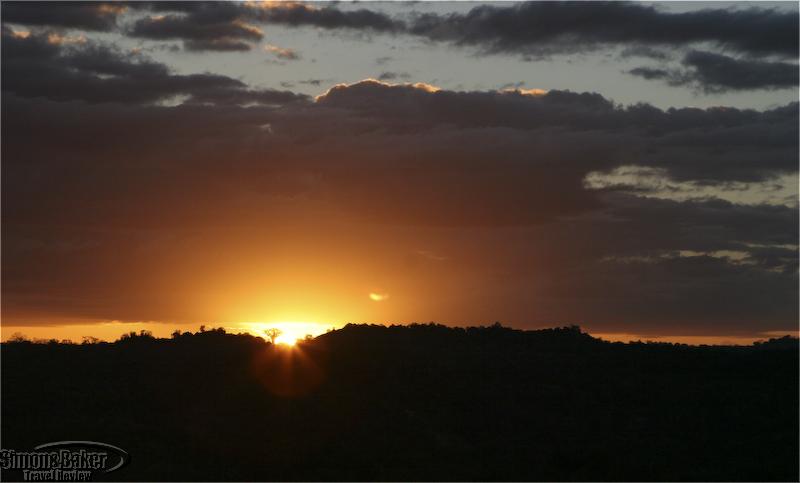
by Editor | May 1, 2008 | Africa, Kruger, Simon and Baker Travel Review, South Africa
As we approached The Outpost I wondered how the property was faring since we first visited the area in 2004, especially now that it was under new management. From my first visit I became convinced The Outpost was a special place worth a detour, even a special trip. I hoped nothing had happened in the past four years to change that.
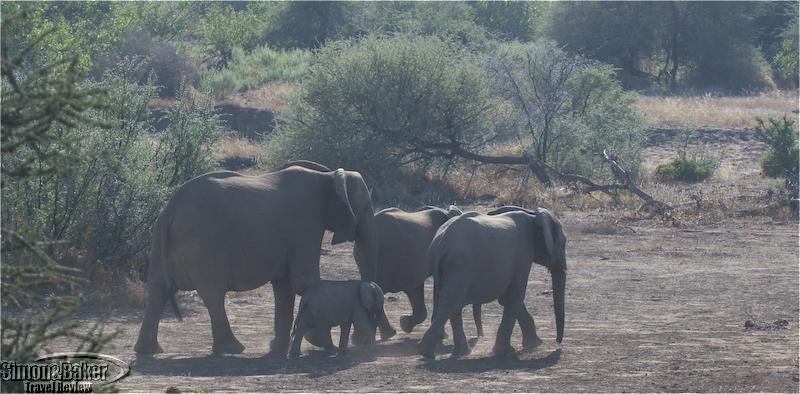
by Editor | May 1, 2008 | Africa, Botswana, Simon and Baker Travel Review, Tuli Block
On our most recent trip to South Africa we decided to take a detour to visit Mashatu Main Camp within the Mashatu Game Reserve in the Tuli Block of southern Botswana. While this was quite out the way of our original itinerary and meant crossing an international border we felt confident the property would be worthwhile. This belief rested in part on Mashatu’s reputation as a haven for elephants. We also liked that Mashatu was a sister property to Mala Mala and Rattray’s, two upscale properties we had visited in the Sabi Sand Reserve near South Africa’s Kruger National Park. It was a worthwhile detour and we much enjoyed our visit.
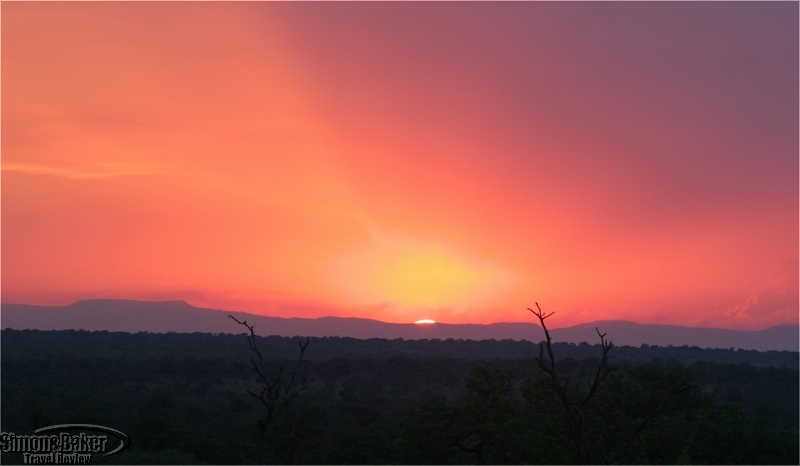
by Editor | Nov 1, 2007 | Africa, Kruger, Sabi Sand, Simon and Baker Travel Review, South Africa
Selati Camp, one of four Sabi Sabi Reserve properties, was decorated with a nostalgic railroad theme. The Sabi Sabi Reserve was situated within the larger Sabi Sand Reserve, an unfenced Big Five private game reserve neighbouring the world famous Kruger National Park. The Sabi Sabi Reserve is home to open areas, woodlands, sloping hills, rivers and pans resulting in an environment with abundant game and excellent game viewing opportunities. In addition to the comfortable accommodations and quality game viewing we enjoyed during our visit, what made Selati stand out for me were two special in camp game viewing moments.
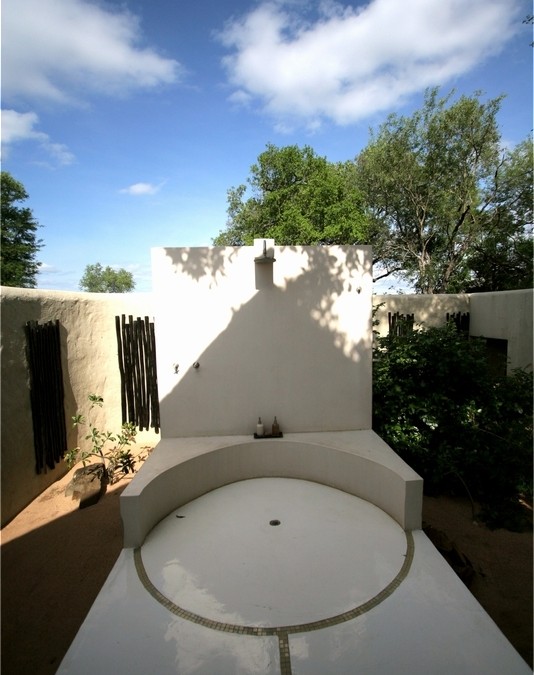
by Editor | Nov 1, 2007 | Africa, Kruger, Sabi Sand, Simon and Baker Travel Review, South Africa
A family owned and managed lodge on the banks of the Sabie River across from the Kruger National Park, Ivory Lodge offered luxury accommodations, appetizing meals, Big Five game viewing, and the kind of personal service only a small property can provide. My second stay at Ivory Lodge was even more rewarding than the first. This boutique bush property ensconced within the world famous Sabi Sand Reserve is the epitome of lavish comfort in a game viewing reserve. Although we arrived at the beginning of the rainy season, Mother Nature was kind and the weather was splendid. Our bush facing two-room designer suite with dedicated butler service was magnificent. Our visit was enhanced by delicious meals and in suite spa treatments.
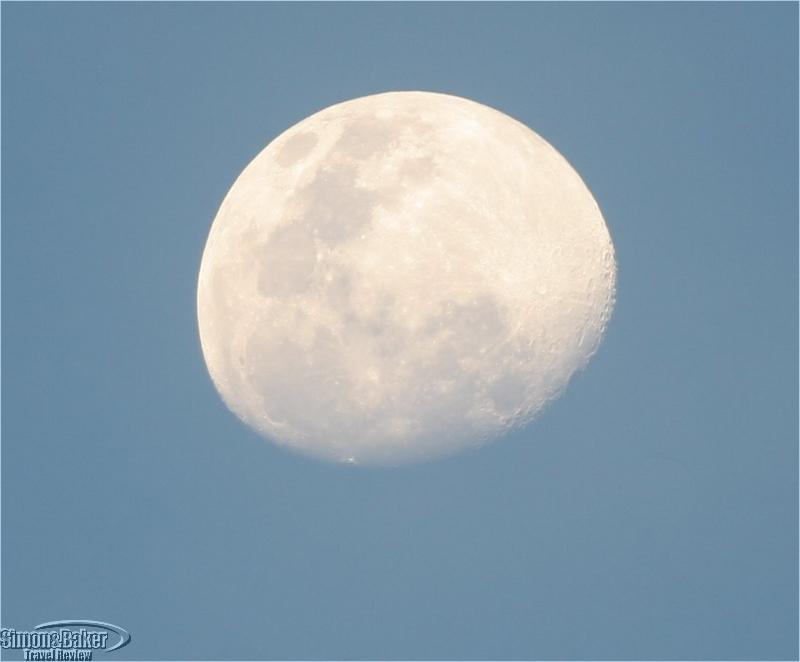
by Editor | Nov 1, 2007 | Africa, Kruger, Sabi Sand, Simon and Baker Travel Review, South Africa
Semi hidden in the African bush, Earth Lodge is the most notable architecturally of the four luxury properties in the Sabi Sabi Reserve. Although we had seen photos before arriving, we were surprised by the stark beauty of Earth Lodge and its grounds.
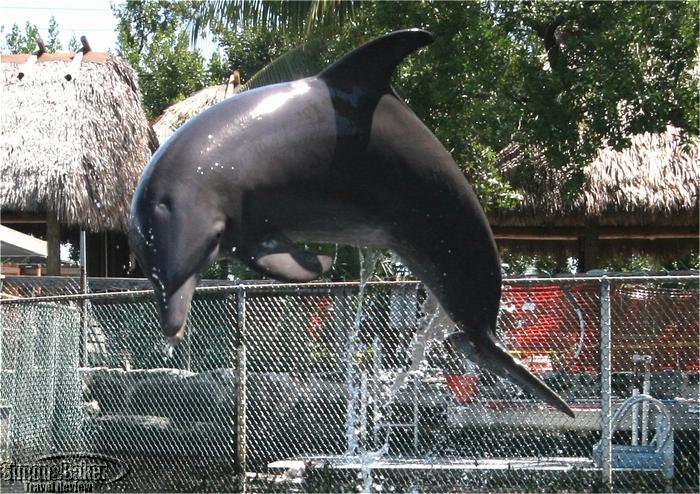
by Editor | Sep 1, 2007 | Florida, North America, Simon and Baker Travel Review, United States
What do you do when a 450-pound animal that moves better, faster and far more gracefully than you do races directly at you at (seemingly) the speed of sound? If you’re participating in a Natural Dolphin Swim at Dolphins Plus like we were, count yourself lucky, make sure your hands stay tucked away and keep swimming as fast as you can. We felt lucky because sometimes the dolphins find visitors uninteresting or the sea mammals are not in the mood for company and ignore visitors swimming in their salt water pen. This means all the effort and excitement to see the dolphins is wasted when they just stay in a corner or swim away making it difficult to enjoy the unstructured swim. In our case, the three dolphins in the pool enjoyed playing with us, making our swim a success.
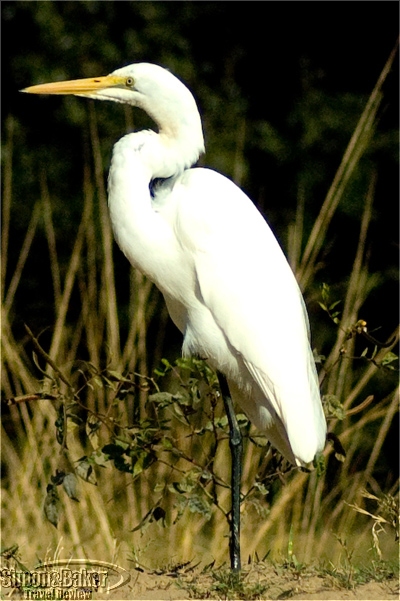
by Editor | Jul 1, 2007 | Africa, Lower Zambezi, Simon and Baker Travel Review, Zambia
The Sausage Tree Camp whimsically announced itself as the motorboat taking me down the Zambezi River approached its landing dock. Pristine conical Bedouin tents peering through the extravagant canopy of riverine forest in the Lower Zambezi National Park? Indeed! The camp consisted of seven Bedouin-style circular tents discreetly positioned above the bank of the scenic entrance of the Chifungulu channel. Each tent offered complete privacy, along with a terrific view of the river and an island filled with shivering reeds where big game loved to hide. The camp’s décor was an inspired fusion of styles resulting in minimalist luxury that left the senses free to concentrate on the intense wildlife activity around and within the camp.
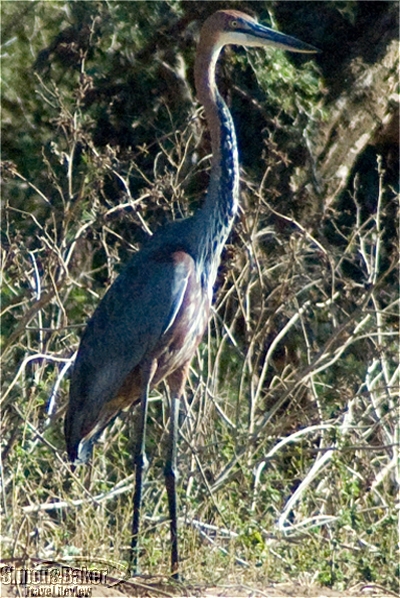
by Editor | Jul 1, 2007 | Africa, Lower Zambezi, Simon and Baker Travel Review, Zambia
Located on the bank of the Chongwe River, at the point where it meets the Zambezi, the Chongwe River Camp offered a panoramic view of the western boundary of the Lower Zambezi National Park. Nestled in a lush grove of winterthorn acacias, this luxurious camp was designed to blend unobtrusively into its splendid surroundings: the steep Zambezi escarpment to the north and Zimbabwe’s famed Mana Pools immediately across the Zambezi to the south. Pods of hippos filled the Chongwe like so many moving islands. Meanwhile, on the opposite bank, the park was home to a dense population of elephants and buffalos that constantly filed to the water for a drink or a bath, or came across to visit. More than once, my short walk from the common areas to my tent was delayed while an elephant ambled down the path, claiming its incontestable right of way.
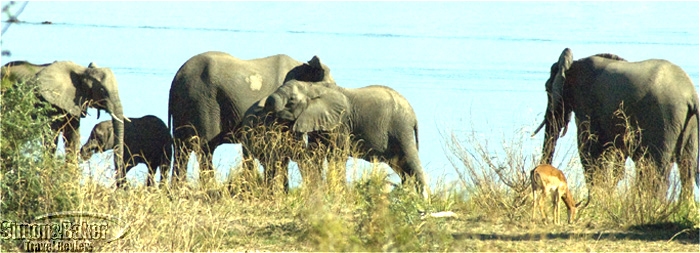
by Editor | Jul 1, 2007 | Simon and Baker Travel Review
Chiawa was my idea of what Eden should be: outstanding creature comforts, superb organization, spectacular views and constant game activity! Nestled under a lush canopy of riverine forest in the heart of the Lower Zambezi National Park, the Chiawa Camp blended so unobtrusively into its surroundings that elephants and buffalos routinely paraded within feet of my tent on their way to the river. Guest accommodations consisted of eight tents on raised wooden decks under thatched roofs. The tents were spread out across the property, set sufficiently apart to give a feeling of peaceful seclusion. All were positioned to enjoy a sweeping view of the massive Zambezi flowing a mere 100 yards away.
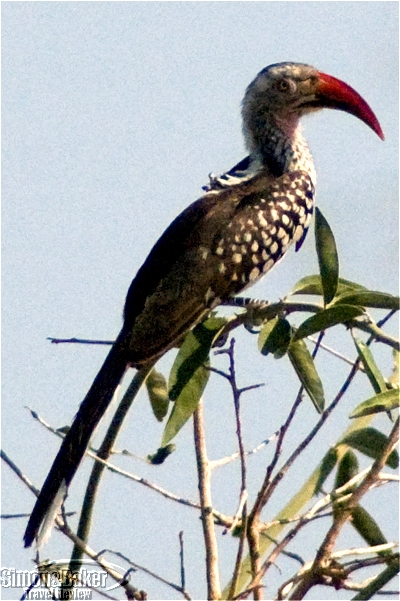
by Editor | Jun 1, 2007 | Africa, Simon and Baker Travel Review, South Luangwa, Zambia
Nkwali was located in the Game Management Area immediately across the river from the South Luangwa National Park, on a prime vantage point of the eastern bank of the Luangwa River. Discretely nestled in a grove of soaring ebony trees, the camp’s six guest chalets and bar area offered a spectacular view of the steep far bank of the river and the acacia forest that constituted the boundary of the park. On the back side of the camp, the dining area was built on a low platform overlooking a small lagoon where a variety of game frequently came to drink. Nkwali successfully coupled the casual atmosphere and intimate proximity to wildlife that only a bush camp can offer with the indulgent amenities of the best safari lodges. From a comfortable lounge chair near the bar, I spent a contented afternoon siesta time watching a herd of elephants wading in the shallow waters of the west bank of the river. I then took their cue and went for a refreshing swim in Nkwali’s swimming pool before teatime.
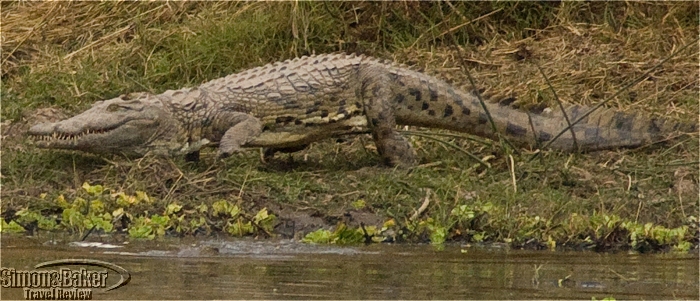
by Editor | Jun 1, 2007 | Africa, Simon and Baker Travel Review, South Luangwa, Zambia
My visit to Luwi was an exciting safari back in time! This remote bush camp located deep in the wilderness of the South Luangwa National Park consisted of four reed and thatch huts with polished mud floor and a small bar area nestled under a canopy of venerable Natal mahoganies. Luwi was a seasonal camp open only during the dry months of June through October. There were virtually no roads in this far-flung area of the park; activities were mainly on foot, lead by long-time Luwi guide Sam Nkhoma, accompanied by an armed scout. At this property, the emphasis was on identifying and following fresh tracks, as well as bird and plant identification.
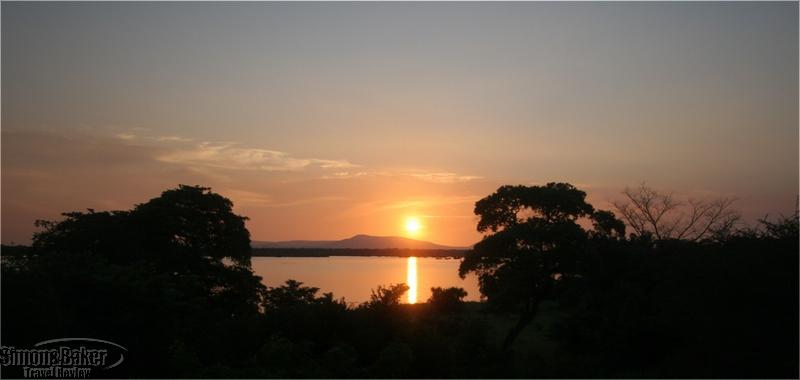
by Editor | Feb 1, 2007 | Africa, Selous, Simon and Baker Travel Review, Tanzania
Chomp, chomp, chomp … just before dawn on our first night at Selous Safari Camp we woke to persistent chewing so close it seemed to be next to our bed. Hesitant to disturb the chewing beast, we remained sitting and listening intently until the dark of the night morphed into a soft gray. Eventually we peeked out of the folds of our tent to see the profiles of several huge animals grazing contentedly. We continued listening as the sound of hippos feeding faded toward the still water of the nearby lake. Moments like these are the reason we travel long distances across land and sea in search of game viewing experiences.
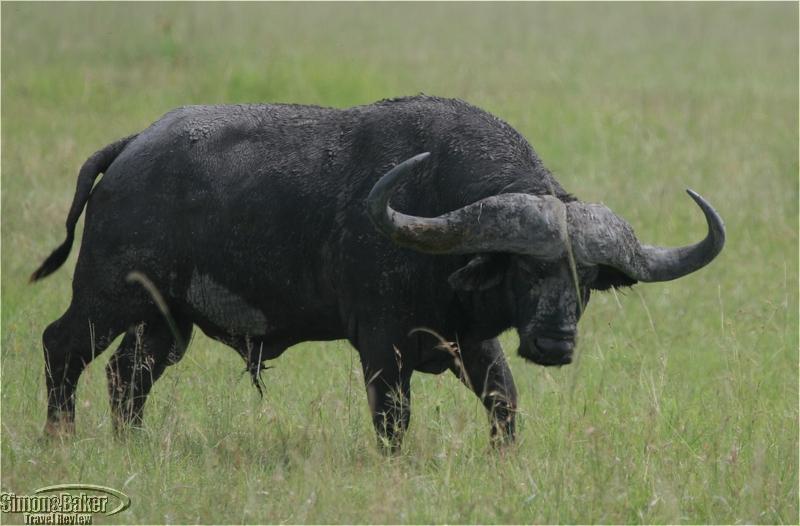
by Editor | Feb 1, 2007 | Africa, Serengeti, Simon and Baker Travel Review, Tanzania
Named Sasakwa for a local chief who used to live on the hill on which the lodge is located, the stately family friendly property offered many advantages for luxury oriented game viewing enthusiasts. In spite of its remote location in the Western Corridor of the Serengeti-Mara ecosystem, bordering the Serengeti National Park in northern Tanzania, Sasakwa offered guests a level of luxury and many creature comforts other properties only dream of having. Sometimes small touches say as much as the widely advertised features. We were impressed with the fresh roses in our cottage, fresh flowers throughout the property and freshly baked butter welcome cookies in our well stocked minibar.
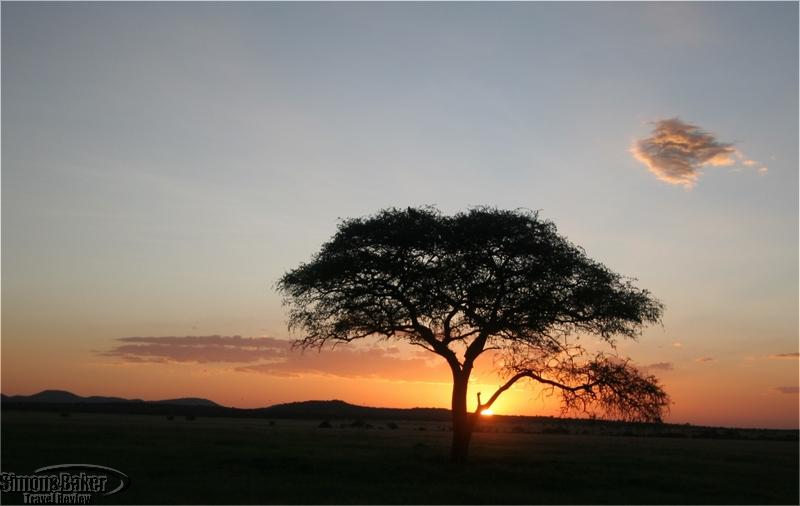
by Editor | Feb 1, 2007 | Africa, Serengeti, Simon and Baker Travel Review, Tanzania
When I think of Sabora I remember chilly mornings followed by hot days, smiling and friendly staff, delicious and well served food, exclusive and rewarding game viewing, a homey informal ambiance and a magnificent tent experience. I reminisce about a perfect day spent in the Tanzania plains with Aloyce, our indefatigable, affable and competent local guide, viewing cheetah in the morning and tree climbing lions in the afternoon; followed by a romantic gourmet candlelit dinner for two accompanied by brutally cold Krug champagne.
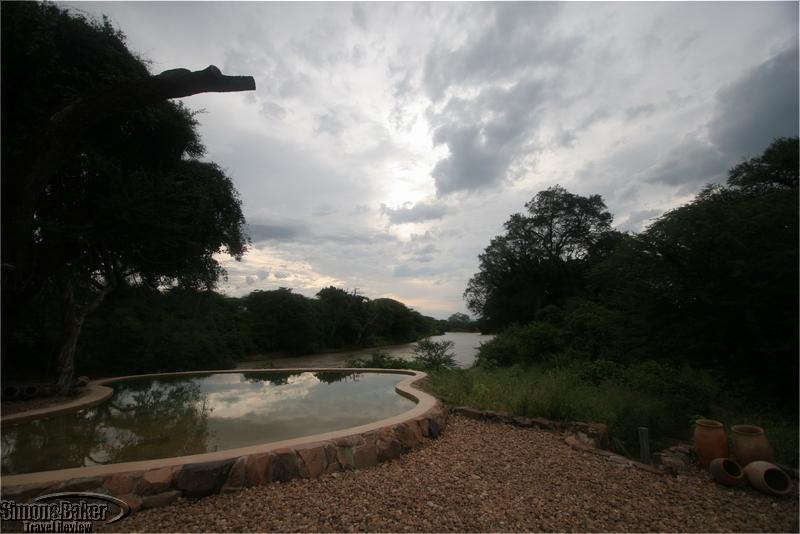
by Editor | Feb 1, 2007 | Africa, Ruaha, Simon and Baker Travel Review, Tanzania
We found Jongomero, named for the He He tribe’s word zongomero which means great wilderness, in a remote corner of Ruaha National Park, one of Tanzania’s fenceless parks dedicated exclusively to game viewing. Described as the “ultimate wilderness” by property manager Greg du Toit, the small luxury tented camp was perched on the edge of the Sand River. Since there were no other camps for many miles, Jongomero guests enjoyed almost exclusive access to that part of Ruaha.
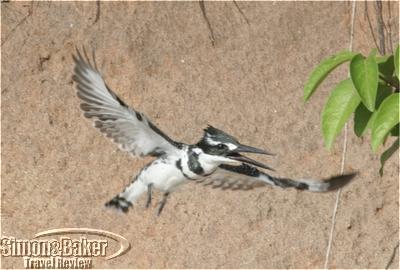
by Editor | Feb 1, 2007 | Africa, Selous, Simon and Baker Travel Review, Tanzania
A two hour morning flight from Ruaha National Park on a Cessna 13-seat plane found us at the Mtemere airstrip, a half hour’s boat ride from Selous Impala Camp. Musa our guide for the duration of our stay, and a boat driver greeted us at the airstrip. After brief introductions and the customary jambo greeting in Swahili we walked to the small motor boat on the Rufiji River banks on which we made our way to camp.
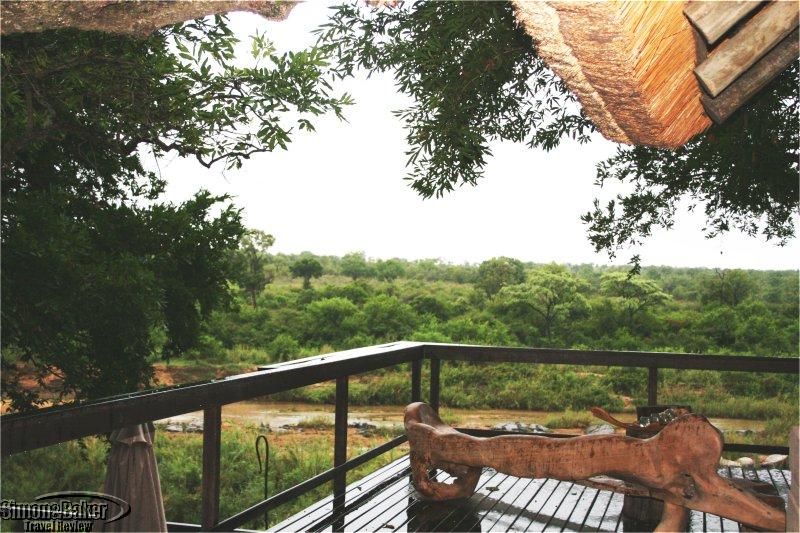
by Editor | Nov 1, 2006 | Africa, Kruger, Sabi Sand, Simon and Baker Travel Review, South Africa
Singita Boulders Lodge, situated within the coveted Sabi Sand Reserve just west of the Kruger National Park, offered understated luxury in a magnificent bush setting. Singita was named for the Shangaan word meaning “The Miracle.” Boulder’s Lodge, a distinctive luxury property with an elegant contemporary style fronting the Sand River for which the reserve is named, stood out for its fabulous adult oriented accommodations (children were welcome in a private section of the property); rustic elegant décor; tasty dishes; and varied activities options such as twice daily Big Five game viewing drives, cellar wine tastings, local village visits, shopping, work outs a the fitness center and spa treatments.
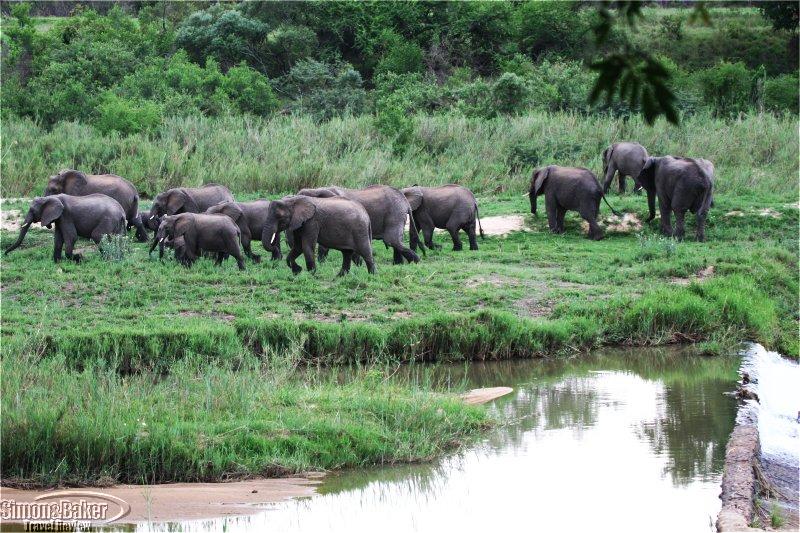
by Editor | Nov 1, 2006 | Africa, Kruger, Sabi Sand, Simon and Baker Travel Review, South Africa
A few months before we visited the property, the aptly named River Lodge in the Exeter Private Game Reserve joined the ranks of Conservation Corporation Africa (CC Africa), a well known African property management company. Although the child friendly property was still completing its incorporation into the new management company’s way of doing things, we heard about upcoming modifications and saw part of the Lodge transformation.
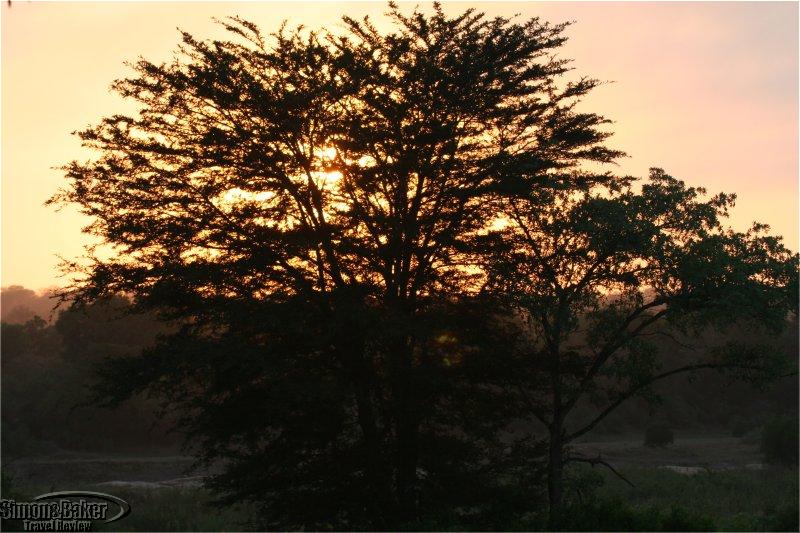
by Editor | Nov 1, 2006 | Africa, Kruger, Sabi Sand, Simon and Baker Travel Review, South Africa
In the early 1900s, several attempts were made to substitute Mala Mala’s wildlife with cattle farming. A losing battle with lions and a constant struggle with wildlife, diseases and drought proved that it was not a viable option. Established in 1929 by Wac Campbell as a preservation area and legacy for his children, by the 1950s it had become a game viewing property. In 1964, the Rattray family purchased the property and upgraded the accommodations to a 1950s style luxury standard. Now part of a conservation gene pool of 5.5 million acres of South African lowveldt, it shares 19 kilometers (12 miles) of border with the Kruger National Park in one of the prime game viewing areas of the world.
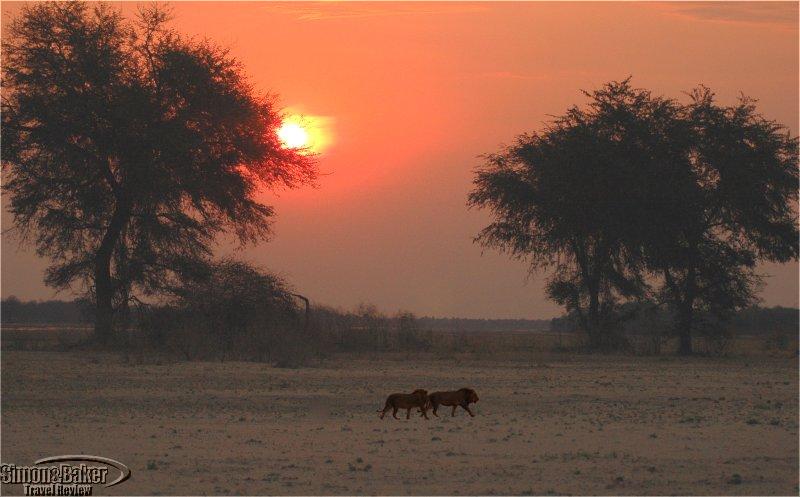
by Editor | Oct 1, 2006 | Africa, Simon and Baker Travel Review, South Luangwa, Zambia
The South Luangwa National Park is a 3,500 square mile stretch of pristine wilderness hidden away in the north-eastern corner of Zambia. The eastern border of the park follows the Luangwa River as it makes its convoluted way toward the Zambezi, leaving behind a patchwork of oxbow lakes and lagoons. According to experts, this remote valley, with its ruggedly varied landscape of savanna and forest, has one of the highest concentrations of game in Africa. It is host to approximately 60 animal and 400 bird species, including most of the Big Five.

by Editor | Oct 1, 2006 | Africa, Simon and Baker Travel Review, South Luangwa, Zambia
Overlooking a tranquil oxbow lagoon, the luxurious Mfuwe Lodge was one of only two permanent, year-round lodges within the 3,500 square miles of pristine wilderness of the South Luangwa National Park. In addition to the large lobby and reception area, the striking open-plan main lodge housed a lounge, bar and dining room under a soaring thatched roof. The space was anchored at both ends by spectacular matching stone fireplaces. A wide boma (timber deck on stone pillars) overlooked the lagoon, as did the swimming pool. Both were ideal spots to enjoy the constant parade of game that visited the lagoon.
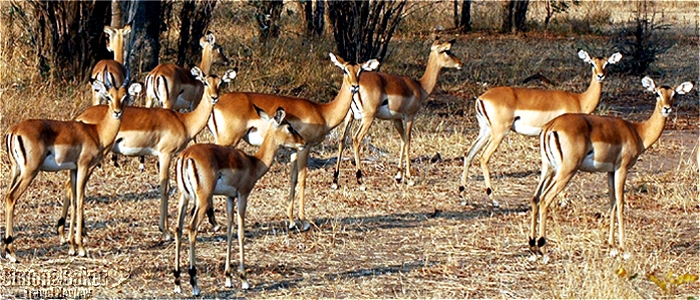
by Editor | Oct 1, 2006 | Africa, Simon and Baker Travel Review, South Luangwa, Zambia
It was already well into the evening when I arrived at Kuyenda, a remote bush camp in the South Luangwa National Park. It was my first destination in the park, at the end of a lengthy journey from the United States, and the start of my maiden safari. I immediately felt transported to a timeless Africa I had expected to be long vanished, other than in my imagination! The camp was nestled in a grove of giant trees, facing a grassy meadow that gently sloped down about three hundred feet to the edge of the Manzi River. It consisted of four spacious guest rondavels, traditional South African circular huts built entirely of local wood, reed and thatch. They were clustered around a thatch-roofed, open-wall dining and lounge area. The entire camp was bathed in the soft glow of oil lanterns, as was the long dinner table invitingly set at the edge of the dry riverbed. The darkness echoed with a rich cacophony of sounds that hinted at abundant wildlife nearby.
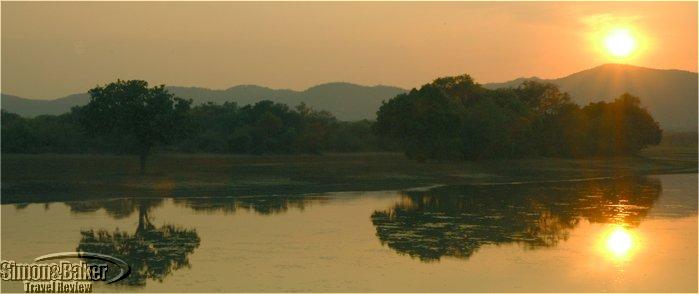
by Editor | Oct 1, 2006 | Africa, Simon and Baker Travel Review, South Luangwa, Zambia
Tucked in the shade of ancient ebony trees at the apex of a permanent oxbow lagoon, Chindeni was a verdant oasis in the parched immensity of the South Luangwa National Park when I visited in the final weeks of the dry season. Everything about the camp exuded welcoming abundance, from the warm reception of the staff to the comfort of the tented accommodations and the profusion of game around the lagoon. Superb vistas of the Nchendeni Hills filled the horizon. The inviting common areas consisted of spacious, thatch-roofed platforms, raised high above the lagoon, and cleverly designed around the trunk of a giant ebony tree that contributed both a sculptural quality and cooling shade to the structure. It included a long viewing deck that was a perfect place to enjoy an early morning breakfast while contemplating the spectacular sunrise over the hills.
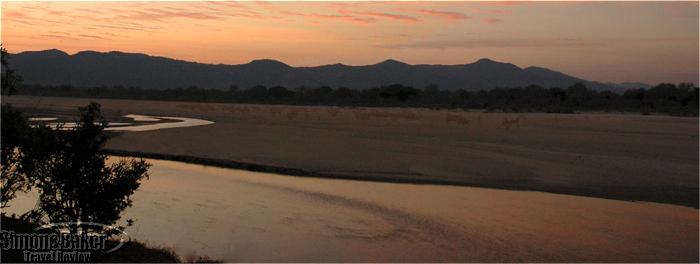
by Editor | Oct 1, 2006 | Africa, Simon and Baker Travel Review, South Luangwa, Zambia
Chamilandu was the most intimate of all the bush camps I visited inside the South Luangwa National Park. It consisted of three guest chalets perched on eight-foot high platforms. Built in the local style with a contemporary flair, each chalet was composed of three walls sheltered by a peaked thatch roof. The fourth side of each rectangular structure was fully opened to a private deck that offered a startling 180 degree view of the Luangwa River, against the distant backdrop of the Nchendeni Hills. The guest chalets were only a few steps away from the spacious dining and lounging hut that was a welcoming gathering spot for all common activities.
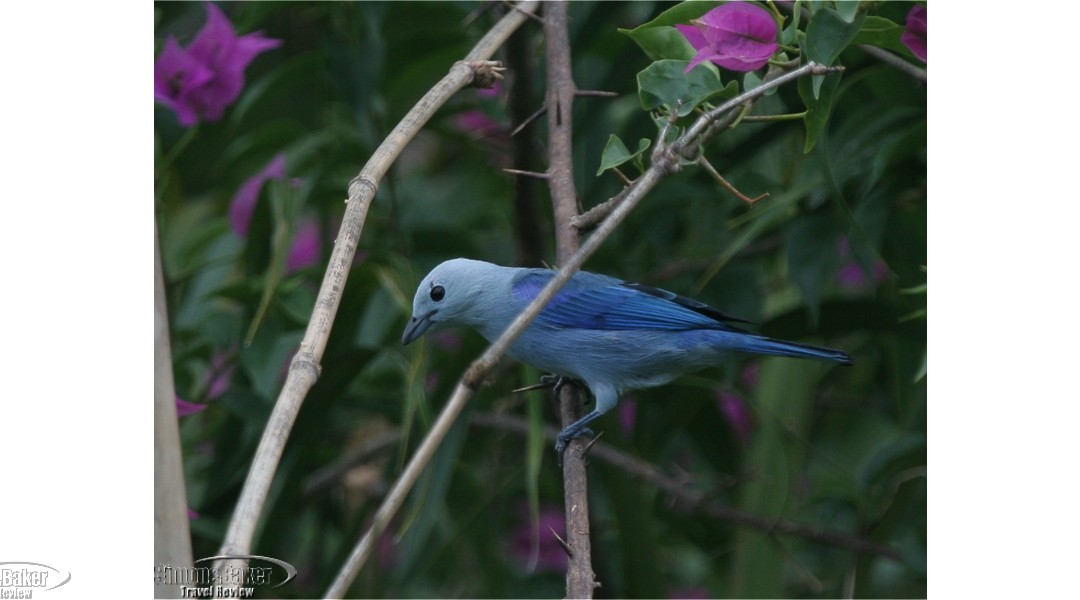
by Editor | Aug 1, 2006 | Simon and Baker Travel Review, Tobago
An early morning departure (we met our guide and three other visitors at 5:30 a.m.) and hour long drive did nothing to dampen our spirits. Scheduling conflicts had forced us to choose between a rain forest tour and a day long sail and the time had arrived to find out if it was a good decision. We had even had to make an impromptu shopping trip to Scarborough to buy long pants for the excursion (we had only brought warm weather casual clothes with us to the island and long pants were necessary to visit the forest). We picked up borrowed rain boots courtesy of our tour company at a roadside spot on our way to the rain forest trail entrance.


















































